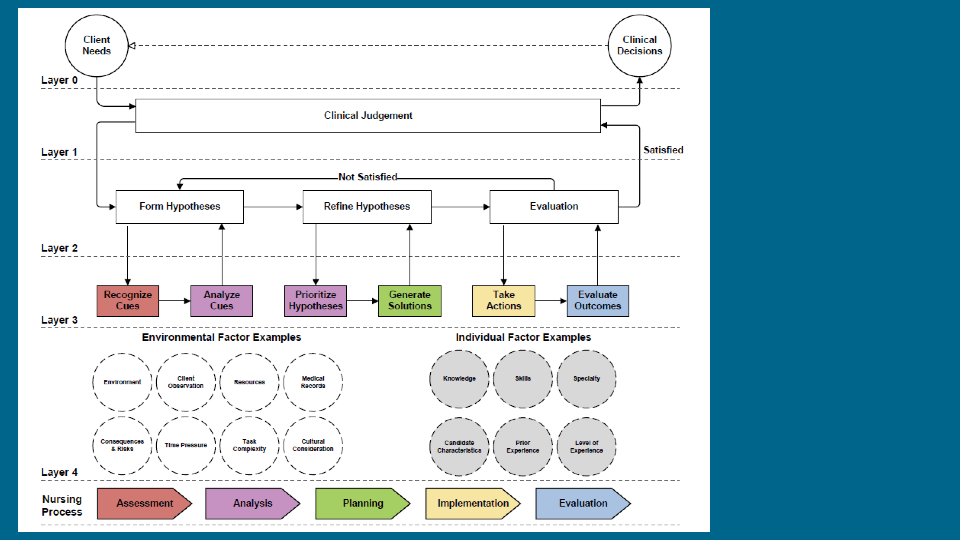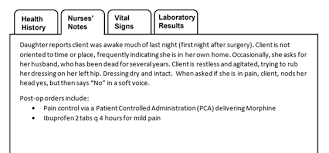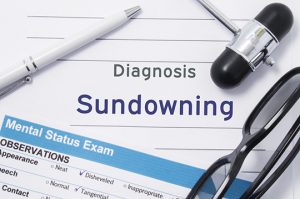
NCLEX is Changing: Learn More!
As of April 1, 2023, the NCLEX-RN and NCLEX-PN will be adding new types of test items to their licensure examinations. Called NCLEX-Next Generation (NCLEX-NGN), every candidate who sits for the exam can expect to find some challenging case studies and questions.
The new test items are going to be different in a few ways. They will:
- evaluate the candidate’s judgment in clinical situations.
- be based on scenarios that a new nurse might encounter.
- provide more medical data for the candidate to consider.
- be longer and more complex than standard test items.
Why is NCLEX changing?
The passing rate for NCLEX has been high for years. In 2022, about 80% of RN candidates from all programs (Baccalaureate, Associate, and Diploma) in the U.S. pass the exam the first time. For PN candidates, the passing rate is also about 80%. That’s good, right?
Yet there seems to be a big gap between what students learn in nursing school and how they practice in their job settings. New nurses are making mistakes…a lot of them. According to a literature review by National Council of State Boards of Nursing (NCSBN), the organization that creates and oversees NCLEX:
- 50% of medical errors involve new nurses
- 65% of errors are attributed to poor clinical decision-making
- Only 20% of employers are satisfied with clinical judgment of new nurses
- A separate study by Johns Hopkins Medicine found that medical errors are one of the leading causes of death in the United States, along with heart disease and cancer.
The purpose of NCLEX is to ensure public safety. Passing NCLEX is meant to demonstrate the entry-level nurse’s ability to provide safe care to patients. Even with an 80% passing rate, there is a disconnect between what’s measured on the exam and the reality of the workplace.
What’s the missing component? Clinical Judgment!
To address the issue of errors by new nurses, NCSBN set out to research what was missing on the NCLEX and how to improve it. The exam is already reviewed every three years and modified to include new nursing practices and responsibilities that reflect current clinical knowledge.
There are always some test items that require memorization, such as normal vital signs, laboratory values, and useful mnemonics. Candidates can count on analytical questions, too, such as what to do first in a situation or what is the priority for a client.
But the area where new graduate nurses struggled was in clinical judgment, the ability to evaluate a problem and make an accurate decision that will improve a client’s outcome. Clinical judgment is defined as “The observed outcome of critical thinking and decision making. It is an iterative process that uses nursing knowledge to observe and access presenting situations, identify a prioritized client concern, and generate the best possible evidence-based solutions in order to deliver safe client care.” (NCSBN, 2019)
A 2017 study by Kavanaugh and Szweda evaluated 5000 novice nurses and reported that new nurses lack basic clinical reasoning and judgment skills. The nurses could recognize changes in a patient’s condition, but they did not know what actions to take, or why to take them. Based on these findings, emphasis has shifted from listing nursing diagnoses to identifying cues and then implementing appropriate interventions.
Introducing the NCSBN Clinical Judgment Measurement Model (CJMM)
NCSBN strives to match NCLEX to current nursing practices. As a result of the findings, NCSBN conducted its own study that confirmed NCLEX needed to include test items that would measure competency in clinical judgment skills in order to protect public health and safety.
Current NCLEX test items do not adequately cover all the aspects or phases of clinical judgment. Rather, the focus has been on the nursing process of assessment, analysis, planning, implementation, and evaluation (AAPIE). Test items—multiple choice and SATA--are based on a right-or-wrong way of thinking, not related to the complex clinical situations a new nurse encounters in actual practice.
The CJMM will measure clinical judgment cognitive skills by presenting clinical case scenarios and asking NCLEX candidates to make appropriate decisions that lead to optimal and safe outcomes. There are six parts to the CJMM:
- Recognize cues: “What matters most?” Cues are pieces of assessment data that the nurse uses to make clinical decisions. The cues indicate what is relevant, essential, or a priority for the nurse to act on.
- Analyze cues: “What does it mean?” The nurse considers the relevant cues and how they relate to the client’s history and current situation. Some cues may be concerning and require immediate intervention.
- Prioritize hypotheses: “Where do I start?” Now the nurse examines all possibilities for the patient’s situation, including risks and priorities. The nurse determines which possibilities are most likely and/or most serious, as well as why.
- Generate solutions: “What can I do?” Using the hypotheses, the nurse can plan specific actions to reach a desirable outcome. Each action can be evaluated as indicated, contraindicated, or not essential/necessary.
- Take action: “What will I do?” Now the nurse can prioritize care for the client. Actions may include further assessment, monitoring, teaching, documentation, or including other members of the healthcare team.
- Evaluate outcomes: “Did it help?” At this point, the nurse reviews the actions and the trends of the patient’s response to care. The nurse can determine if solutions were effective, ineffective, or made no difference.
Below is the CJMM diagram, showing how the model proceeds from start to finish. NCLEX-NGN test items are based on Level 3 of the model. This also illustrates how well CJMM fits with AAPIE. They work together to provide better patient care.

Get ready for case studies
In order to cover the six parts of the CJMM, the NCLEX-NGN will include “unfolding case studies.” The case studies will present a clinical scenario that has six test items, one for each clinical judgment skill. Data will be provided in ways that the nurse sees during a normal hospital shift or clinic visit. By using tabs that the NCLEX candidate can click back and forth to review, the client’s medical health record, nurse’s notes, vital signs, laboratory results, imaging results, and other data can be accessed.
Here is an example of how the tabs may look on an unfolding case study.

Each case study will go through the six components in order. The candidate will review the data and answer a test item. Formats for the NCLEX-NGN test items will be different, requiring the candidate to use clinical reasoning to provide responses.
The case study will begin by providing the scenario and giving enough information for the candidate to identify some cues and respond to a test item. Then the candidate gets more data to analyze the cues and again respond to a test item. The case study unfolds, adding more data, until the candidate is asked to evaluate the outcome. Throughout the case study, the candidate decides how much data is relevant, what actions are indicated, and which interventions are appropriate.
Candidates can expect to find three unfolding case studies during their NCLEX, for a total of 18 questions. There are also some stand-alone questions, like a mini-case study in a single test item.
What else is different about the unfolding case studies?
The NCLEX-NGN unfolding case studies have new types of questions. Nurse Plus will describe them in next month’s article. The list seems long, but many of the test items are similar and all are easy to understand.
- Matrix multiple-choice
- Matrix multiple-response
- Multiple-response: Select all that apply
- Multiple-response: Select N
- Multiple-response: Grouping
- Drag-and-drop: Cloze
- Drag-and-drop: Rationale
- Drop-down: Cloze
- Drop-down: Rationale
- Drop-down: Table
- Highlight: Text
- Highlight: Table
The unfolding case study will present information on the left side of the screen, with a test item on the right side. After the candidate answers the question, the screen will update with more information and move to the next step of the case study. A standard multiple-choice test item can also be included in the case study. Once a candidate has responded to a test item, they cannot go back and change their response.
Good news! Now there will be partial credit!
In previous versions of NCLEX, all responses to test items were either right or wrong (dichotomous) even with multiple response (Select-All-That-Apply, or SATA) questions, if the candidate selected just one incorrect response out of multiple possibilities, the entire question was marked wrong. Now there will be full, partial, or no credit for test items (polytomous), including the current SATA questions.
NCSBN explains it: “Currently, SATA items are scored such that the only way to get a correct score is to select all the keys (correct responses). Selecting a subset of the keys will result in obtaining an incorrect score. This approach does not differentiate individuals that might get one, two or some other number of correct keys. For instance, if there are three keys and person A gets one correct while person B gets two correct, they are both scored as incorrect at present. However, it seems reasonable that person B showed some higher understanding than person A, but not as much as someone getting all keys correct. The partial credit models will allow for this type of differentiation in candidates’ knowledge, skills and abilities.”
What stays the same with NCLEX-NGN?
Although the changes in the 2023 NCLEX seem like they will be overwhelming, most of the test items will remain the same. Standard multiple-choice and SATA questions will make up most of the examination.
The total number of test items will range from 85 to 150, just a few more than the current 75-145. This includes 15 questions that are being evaluated for future examinations, the same as before. A candidate may receive 52-117 stand-alone questions. With the 18 case study questions, total scored items will be 70-135. The test time remains five hours.
The NCLEX will still be delivered by computerized adaptive testing (CAT) that allows questions to be given that match the candidate’s ability level. No matter where the candidates fall on the scale, they will receive test items that are the same difficulty.
The result: Safer care for patients
NCSBN has been working on the NCLEX-NGN project for almost ten years. Collaboration with nursing schools to adapt their curriculums to prepare students to use clinical judgment will mean that new graduates will start their careers with skills that will help them as novice nurses and continue to improve with experience.
There will be fewer errors and safer care for patients. New nurses will have more confidence in their decisions. While it may seem like the NCLEX-NGN is daunting, it will be a win-win for all involved.
Every nurse, whether a new graduate or a seasoned leader, should buy and maintain professional malpractice insurance. Read more about it here.
Find out your chances by taking one of our practice tests.
Take a free test Reviewed by
Reviewed by 

